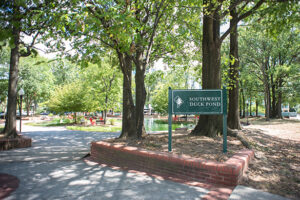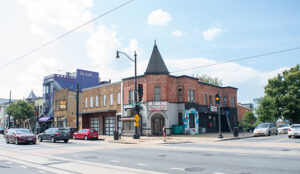Washington DC Neighborhood Guides
About Virginia, Maryland, & Washington, D.C.
About
Orders to the D.C. area are often accompanied by excitement, followed by a wave of apprehension. D.C. is a massively complex metropolitan area and can be intimidating when deciding where to live. Getting over the sticker shock, understanding the unique challenges of commuting around D.C., and managing expectations are vital to finding the right place to live. But once you tackle all that, you can enjoy everything that comes with living near the nation’s capital!
While choosing where to live can be daunting, the great news is that once settled; most people love their bubbles! School choices, especially in Northern Virginia, are abundant, and career opportunities abound as D.C. is host to professionals in various fields.
Options abound, from full-time jobs to teleworking, but these opportunities come with additional considerations for finding a home. The D.C. area often referred to as the “DMV” (for D.C., Maryland, and Virginia), is one of the best assignments in the military for working spouses. DMV traffic is among the nation’s worst, so finding a home with easy commutes to two different jobs is no easy task.
On the upside, almost everything from parks to libraries, not to mention the museums, are well-funded and free to enjoy. Diversity and rich cultural experiences are plentiful, and the culinary scene is fantastic. Though the cost of living in this region is substantial, you can often find free activities and military discounts.
Professional sports teams include the Washington Redskins (NFL), Washington Nationals (MLB), Washington Capitals (NHL), and D.C. United (MLS), and the Washington Wizards (NBA). People in the area tend to be busy and active, and a competitive spirit permeates all the way down to youth sports.
The weather is almost as intense as the people, with all four seasons in full bloom: hot, humid summers; mild, colorful falls; cold, harsh winters; and breathtakingly beautiful springs.
The first step in choosing where to live is to determine your priorities. There are three main values, if you will, to consider: Home Size, Home Price, and Commute. You will be able to secure one, and potentially even two, of those values—but rarely all three. On each page, we’ll break down some of the more popular areas for military families and explain which values you’ll sacrifice to live there.
Pro Tip: If you come armed with this info before chatting with a real estate agent, they’ll have an enormous leg up in helping you find a home quickly. Efficiency and knowledge are crucial in this hyper-competitive real estate market.
Size
As with many urban cities and surrounding suburbs, the closer you are to D.C., the smaller and more expensive the home; if having a large house is a priority, you’ll live farther out and suffer a longer commute.
Price
Your money goes further as you radiate away from the District. The “price” you’ll pay for affordability is spending lots of “quality time” in your car. If you LOVE your car or need the time to decompress, go for it! There are also many alternatives to sitting alone in your vehicle for precious waking hours, like slugging, Metro, and VRE or MARC long-haul trains. Don’t worry; we’ll break it all down for you.
Conversely, to reap the benefits of a short commute and proximity to the District, you’ll likely need to be dual-income and willing to spend a significant percentage of your income on housing or be okay with a less-than-amazing home.
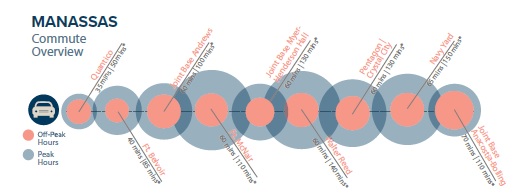
Commute
This is the big one. We cannot stress enough the importance of understanding the traffic situation! Listen up because this can make or break your experience in the D.C. area.
Legendary congestion on all of the main highways, an almost incomprehensible number of people commuting into D.C., and the irregularities of road work, accidents, and weather, make commuting a primary challenge of life in the DMV. We’ve heard stories of two- to three-hour commutes one way, workers giving up and teleworking after moving 15 miles in two hours, and even people stopping off at a winery in the evening and trying again around 8:00 PM (our personal favorite).
You cannot look at distance on a map and equate that to commute time. It could take 30-plus minutes to drive eight miles in the city, and it’s a total gamble on the highways. Flex your creative commuter muscle, and you can discover some workarounds to these headaches. Living close enough to bike or walk to your installation or in proximity to a Metro station will alleviate some stress, and reverse commuting can be a sanity-saver. Also, don’t let anyone tell you that any area is 20 minutes from all the bases. Just walk away from them. It’s so much more complicated than that. But don’t worry—we’ll give you the legit scoop.
Remember, many people stationed at a D.C., Maryland, or Virginia base will work in multiple locations over the length of their time here. For example, those initially stationed at the Pentagon could report to Crystal City (Arlington) and then the following year be sent to Fort Belvoir (southern Alexandria) or Fort McNair (D.C.). You’ll want to have an idea of your spouse’s professional trajectory and consider that when choosing a home. Strike a balance for all possible assignments, or at least be okay
with the potential sacrifices.
Commuter Options
Metro – (Washington Metropolitan Area Transit Authority) Metro Rail serves D.C. and the surrounding areas with over 90 stations and more than 100 miles of track. The Metrobus supplements the rail system by connecting lines and stations to outlying communities.
Local Buses – Each jurisdiction has a local system that can supplement the Metro system. If you are farther away from the District, you’ll rely on local buses more often.
Commuter Rails – Virginia Railway Express (VRE) and Maryland Area Regional Commuter (MARC) are long-haul rail systems for commuters.
DOD Shuttle – The Department of Defense operates a fairly robust shuttle system in the National Capital Region. This is an additional commuting option for many.
Bike/Run – There is an extensive multi-use trail system around the D.C. area and the surrounding bases. Many service members enjoy a scenic ride or run to work without stress.
Driving – If you are driving, familiarize yourself with HOV and Express Lane rules.
Ridesharing – There are all sorts of adaptations to carpooling. If you have three or more people in the car, you can take advantage of the HOV lanes (which can save you hours). Sometimes it’s tough to coordinate two other riders and destinations. Therefore, slugging was born. You can go to a designated slug lot and either line up to pick up passengers or hop in a car going in your direction—for free! There are websites and apps to help with coordination. Uberpool and Vanpooling are also variations of ridesharing.
Air Travel – Work trips, flights to see family, or vacations are accessible with three large airports: Washington Reagan National (DCA), Dulles International (IAD), and Baltimore Washington International
(BWI).
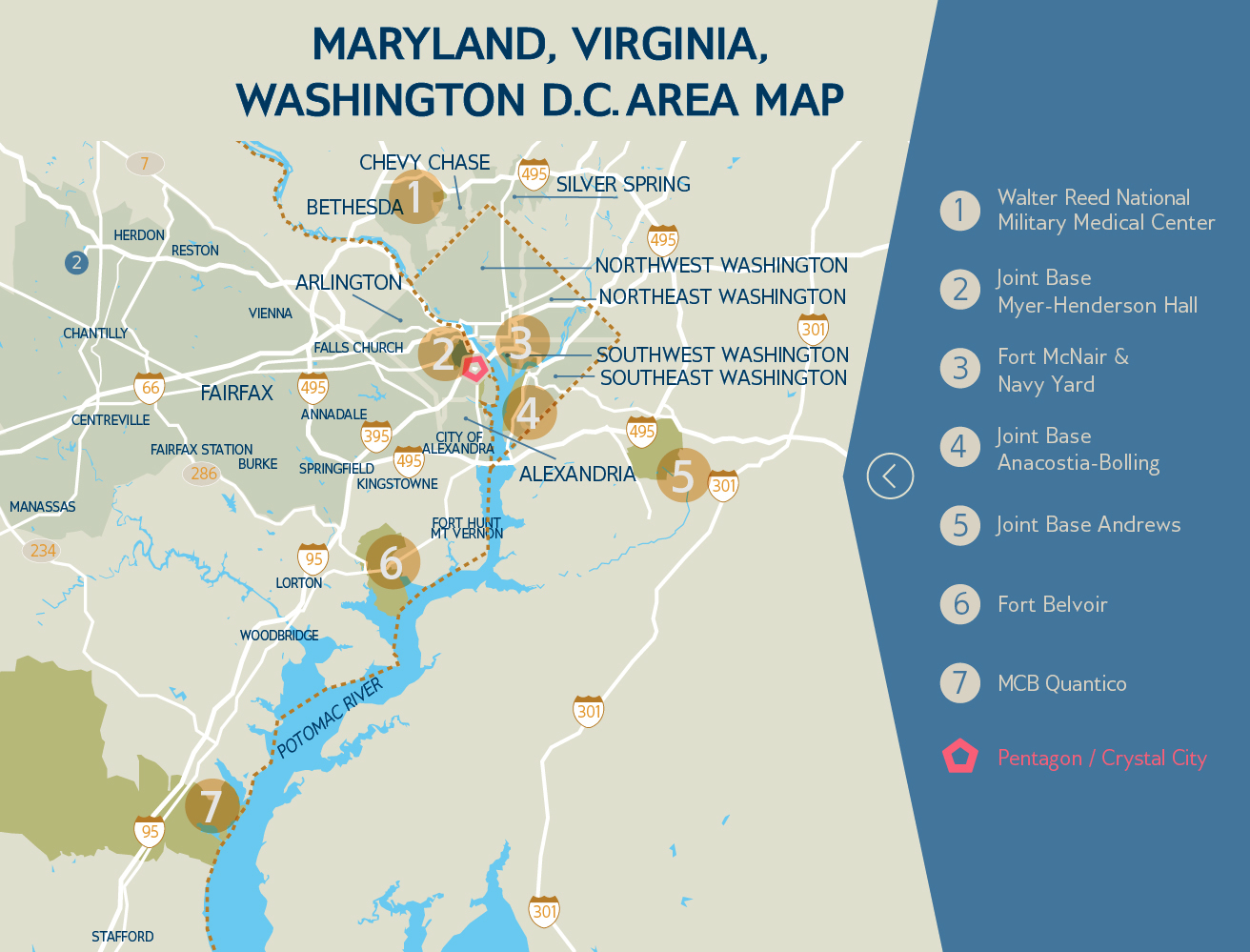
Looking at relocating?
Enter your information below and we will reach out to help the process.
Nearby Neighborhoods
Nearby Neighborhoods
District of Columbia
About 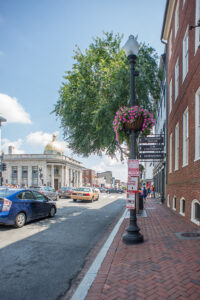
Welcome to the Nation's capital! Washington, DC, represents the hub of all American politics, policy-making, and lobbying. This is the epicenter of the entire National Capital Region, and all roads seem to lead here. D.C. abounds with history, cultural opportunities, theaters, museums, festivals, political events, restaurants, and nightlife. It reflects the tremendous diversity in population, interests, and culture that makes America unique. The city is roughly divided into four quadrants, Northwest, Northeast, Southwest, and Southeast. (Pay close attention to those address designations when traversing the city!) Each area of the city has its own unique culture and considerations for those looking for homes.
Neighbors
The variety of people you'll find within D.C. is almost impossible to describe. Some neighborhoods are swanky and affluent, home to the Nation's most powerful and influential people. Other neighborhoods are populated with students and young professionals trying to work their way up the D.C. ladder. Still, others reflect the region's history and display its vibrant culture.
Commute
Public transit is easily accessible from nearly everywhere in D.C. If there isn't a Metro station within walking distance, bus lines are plentiful. Some parts of the city areas also have streetcars, water taxis, and bike-share services. Tech rideshare services like Lyft and Uber are also abundant!
Schools
- Schools are operated by the District of Columbia Public Schools (DCPS) and the Washington Latin Public Charter schools in Northwest D.C.
- Lotteries are available for preschool programs (3- and 4-year-olds), out-of-boundary schools K-12 (those outside your zone), selective high schools, and charter schools. Spots fill up, so enroll as soon as the lottery opens in their online system.
- Military families may apply for the DCPS Lottery by working with your School Liaison Officer (SLO) before you have orders. We suggest discussing school options with the SLO, particularly for middle/high schoolers, and if you have a gifted child with an IEP or other specific needs.
- D.C. preschools are publicly funded (FREE) and fill quickly. Enrolling early in a preschool or Child Development Center (CDC) near your home is recommended because bus transportation is unavailable at this age.
Northwest D.C.
About
 Northwest is D.C.'s largest and most "postcard-worthy" area. Extending north of the National Mall and west from North Capitol Street (the street that extends from the Capitol Building), Northwest is home to many of the District's wealthier neighborhoods. The restaurants are world-class, the shopping rivals any other metropolitan city, the history is inspiring, and there's a story on every corner. The variety of people you'll find in Northwest D.C. is almost impossible to describe. Some neighborhoods are swanky and affluent, home to the nation's most powerful and influential people. Other areas are populated with students and young professionals trying to work their way up the D.C. ladder. Singles and young couples love Adams Morgan, Dupont Circle, and Penn Quarter for the social scene.
Northwest is D.C.'s largest and most "postcard-worthy" area. Extending north of the National Mall and west from North Capitol Street (the street that extends from the Capitol Building), Northwest is home to many of the District's wealthier neighborhoods. The restaurants are world-class, the shopping rivals any other metropolitan city, the history is inspiring, and there's a story on every corner. The variety of people you'll find in Northwest D.C. is almost impossible to describe. Some neighborhoods are swanky and affluent, home to the nation's most powerful and influential people. Other areas are populated with students and young professionals trying to work their way up the D.C. ladder. Singles and young couples love Adams Morgan, Dupont Circle, and Penn Quarter for the social scene.
Big Plus
- Because of the international diversity of D.C., you can find ethnic food from around the globe in addition to boutique cupcakeries, dive diners, celebrity chef powerhouses, and everything in between, in any price range.
- Visitors flock to Northwest neighborhoods for the shopping and social scene. It's all here - boutiques with couture clothing, bespoke suits, luxury designers, department stores, farmers' markets, and even flea markets with funky vintage finds.
- Parks and green spaces are in high demand because of D.C.'s active and outdoorsy residents and are plentiful in the Northwest.
Things to Consider
- Northwest is expensive. More affordable neighborhoods are in other quadrants of D.C., but Northwest typically gets all the love.
- Do your research on schools, as there are so many options. Your installation's School Liasion Office (SLO) is a great resource.
- Buying or renting a home sight unseen is not recommended; you'll want to get a feel for the neighborhood before you move here.
Commute
Public transit is easily accessible from nearly everywhere in the Northwest. Bus lines are plentiful if there isn't a Metro station within walking distance, or you can just grab a bike from the bike share rack! Northwest is very walkable, so ditch one (or both) cars and embrace the public transit system.
Points of Interest
- National Cathedral
- The White House
- Smithsonian National Zoo
- Rock Creek Park
Southwest D.C.
About
Southwest is the smallest of Washington, D.C.’s quadrants, but if you’ve visited the Nation’s Capital, you’ve probably been there. The boundaries of Southwest extend from the axis of the Capitol Building west for the entire length of the National Mall and south to include Joint Base Anacostia-Bolling across the river. Southwest is one of the more historic areas in the District, with some homes dating back to the 1700s. This history collides with the new waterfront development that will likely be one of the hottest new neighborhoods in D.C. This represents a broader transition from being an often-overlooked area to an active, thriving, urban community with street-level shops and eclectic residents.
Big Plus
- Ideal location for those reporting to Fort McNair, but larger families tend to migrate to Northern Virginia in search of more space.
- Stunning views of the Potomac River abound, and residents love being within walking distance of the National Mall.
- Southwest is a great location. You’re close to all of the beloved attractions at and near the National Mall, just a bridge away from Old Town Alexandria, and not far from Arlington.
Things to Consider
- Buying or renting a home sight unseen is not recommended; you’ll want to get a feel for the neighborhood before you move here.
- Until the new developments are completed, there’s limited inventory available.
- Areas near the National Mall are tourist-heavy, with abundant monuments and attractions, but the crowds of visitors thin out dramatically as you travel south.
Commute
Public transit is incredibly accessible from the Southwest Waterfront. The Waterfront Metro Station (Green and Yellow lines), L’Enfant Plaza (Green, Blue, Orange, Yellow, and Silver), and Federal Center (Silver, Blue, and Orange) are all nearby. It’s only 4.5 miles away from Reagan National Airport, and Union Station is easily accessible as well.
Points of Interest
- Smithsonian National Museums
- Washington Monument
- Lincoln Memorial
- Thomas Law House
- St. Dominic’s Church
- Arena Stage at the Mead Center for American Theater
- Maine Avenue Fish Market
Northeast D.C.
About
Northeast is a much-overlooked quadrant of D.C. with many up-and-coming neighborhoods with affordable homes, condos, and plenty of fixer-uppers in transitioning neighborhoods. Hipster destinations like NoMa (North of Massachusetts Ave.) and the H Street Corridor are trendy locales with nightlife, more affordable housing, and easy Metro access. The northern part of Capitol Hill lies within the Northeast boundary as well. The area is rich in African-American history, and some areas east of the Anacostia River have morphed from plantations into some of the city’s first majority African-American communities. There are many gems to be discovered in Northeast!
Big Plus
- You can find an affordable home here, especially if you’re interested in a rehab property. Single-family, detached homes are also reasonably common but can need some TLC.
- Artsy, energetic, and quirky vibes exist in several Northeast neighborhoods—particularly near the H Street Corridor and the Atlas District. Young singles love the area for its nightlife and chill personality.
- The rail hub, Union Station, makes trips up and down the Eastern Seaboard convenient.
Things to Consider
- Retail, restaurants, and amenities are thin but improving.
- Neighborhoods nearest the Metro stations are getting the most attention in revitalization efforts. Be sure you know how far your public transit options are from any home you’re considering.
- There is a lottery for D.C. schools if your neighborhood school doesn’t excite you. However, that means you could spend a good portion of your day driving your kids to and from school.
Commute
The new D.C. Streetcar adds another way of getting around, in addition to the Metro rail and bus systems, bike shares, and Ubers aplenty. If you’re in some of the outer neighborhoods that border Maryland, you may need a car to get around—primarily due to the lack of retail.
Points of Interest
- U.S. Capitol Building
- National Shrine of the Immaculate Conception
- The Supreme Court
- Catholic University of America
- National Arboretum
Southeast D.C.
About
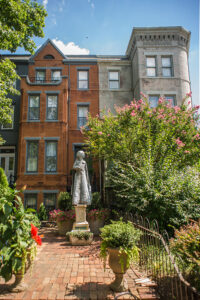 Southeast D.C. is the area south of East Capitol Street and east of South Capitol Street (think of the Capitol Building as the center point of a compass). It continues beyond the Anacostia River and includes the area known as “East of the River.” Southeast has a vibrant culture and has undergone significant revitalization over the past few decades. As with any urban city, you’ll find pockets of crime and areas with bad reputations, but we encourage you to look past that. There are many new high-rise buildings near the water, and the Capitol Hill neighborhood has quaint, tree-lined streets with pricey rowhomes and local shops on every corner. The construction of Nationals Park in 2008, home to the Washington Nationals professional baseball team, has helped the area tremendously by attracting restaurants, grocers, parks, and public-use amenities to the Southeast Riverfront.
Southeast D.C. is the area south of East Capitol Street and east of South Capitol Street (think of the Capitol Building as the center point of a compass). It continues beyond the Anacostia River and includes the area known as “East of the River.” Southeast has a vibrant culture and has undergone significant revitalization over the past few decades. As with any urban city, you’ll find pockets of crime and areas with bad reputations, but we encourage you to look past that. There are many new high-rise buildings near the water, and the Capitol Hill neighborhood has quaint, tree-lined streets with pricey rowhomes and local shops on every corner. The construction of Nationals Park in 2008, home to the Washington Nationals professional baseball team, has helped the area tremendously by attracting restaurants, grocers, parks, and public-use amenities to the Southeast Riverfront.
Big Plus
- Southeast is home to a gorgeous riverfront, abundant public spaces, and parks with a young vibe and an active culture.
- Two fantastic parks, Yards Park and Capitol Park are right on the river and are constantly abuzz with activity.
- The Eastern Market is a trendy food and arts market in the Capitol Hill neighborhood, and it lies only a mile north of the Navy Yard.
Things to Consider
- Areas near the National Mall are tourist-heavy with the abundance of monuments and attractions, but the crowds of visitors thin out dramatically as you travel south.
- Buying or renting a home sight unseen is not recommended; you’ll want to get a feel for the neighborhood before you move here.
- There is a lottery for D.C. schools if your neighborhood school doesn’t excite you. However, that means you could spend a good portion of your day driving your kids to and from school.
Commute
- Transit options are many, with the Navy Yard Metro Station, bus service, and the Circulator bus to connect to Union Station and Capitol Hill. There’s even a water taxi!
Manassas
While not technically within Fairfax County, Manassas is a picturesque city that should be involved in any discussion of the area. Manassas lies beyond the Fairfax County line in Prince William County and includes Manassas City and Manassas Park.
Big Plus
- Affordable homes in a community with a strong “small-town” vibe
- Quaint downtown and historic district are indeed gems
Things to Consider
- Achieving a more rural, small-town feel means your commute time will be considerable.
- Parts of Manassas operate their own school districts, Manassas City Public Schools and Manassas Park City Schools; other areas attend Prince William County Public Schools.
Commute
Amtrak and the VRE both serve Manassas. Commuting by car, though commonplace, involves a long drive and is fraught with traffic headaches.
SOUTHERN NOVA
About
Prince William County and Stafford County are located in the southern reaches of the Northern Virginia (NOVA) suburban area. Similarities with Fairfax County are numerous, and some statistics even surpass those of Fairfax County. The cost of living in Southern NOVA is lower, and the neighborhoods are a mix of suburbs and more rural areas. Many military families live in southern NOVA for its natural beauty and the community’s emphasis on outdoor activities. Numerous parkland acres, nature refuges, lakes, forests, trails, and golf courses lure residents outside.
Neighbors
Like most of Northern Virginia, you’ll also find residents who work in various sectors, and many of the population commutes into D.C. or other parts of Northern Virginia. Many military families migrate to this area for the space and quieter lifestyle. Areas closest to the I-95 corridor will be more densely populated and thin out as you move away from the highway.
Commute
Public transit options are limited to the VRE, so driving is the most common mode of transportation. If you plan to live this far away from D.C., commuting in via I-95 (southern suburbs) is considered preferable to driving in via I-66 (western suburbs). Stafford and Woodbridge have similar perks as Chantilly or Centreville, but I-95 is better equipped to handle the commuter traffic with more HOV, Express Lanes, and available options for slugging, carpools, and commuter buses at commuter lots throughout the area.
Schools
- Prince William County contains over 100 schools. Public schools in Woodbridge are part of Prince William County Public Schools.
- Stafford County contains over 30 schools. Public schools in Stafford belong to Stafford County Public Schools.
- Virginia does not follow Common Core standards, so you will want to be acquainted with the Virginia Department of Education Standards of Learning (SOLs) to ensure your student is prepared, especially when transferring from a Common Core state.
Points of Interest
- National Museum of the Marine Corps
- Manassas National Battlefield Park
- Manassas Train Station
- Leesylvania State Park, Prince William Forest Park
- Splash Down Waterpark
- Burnside Farms
- BadWolf Brewing Company, Heritage Brewing Company, The Winery at La Grange
- Occoquan Bay National Wildlife Refuge
- Ben Lomond Manor House & Old Rose Garden
Woodbridge
Woodbridge boasts large, affordable homes and one of the region’s most well-known shopping centers—the Potomac Mills Mall. Many people like being in Woodbridge because of the size and affordability of the homes. And while it is a very tough commute to bases to the north, the reverse commute to Marine Corps Base Quantico is ideal.
Big Plus
- A reverse commute to Marine Corps Base Quantico is ideal at about twenty minutes.
- Many options for larger, new build homes in master-planned communities
- Prices are less inflated than in some areas closer to D.C., and you still have all the amenities that you would expect to find in a large city
Things to Consider
- Be careful of underestimating the commute times. Even the 10 miles to Fort Belvoir can take more than an hour.
- Schools in Woodbridge belong to Prince William County Public Schools, which have more than 100 schools in the district. You’ll want to devote some time to evaluating school options.
- Though it is slightly further south, you should still expect a relatively fast-paced and competitive market here.
Commute
It’s easy to grossly underestimate the commute times from Woodbridge. The only base Woodbridge is 20 minutes away from is Marine Corps Base Quantico, mainly because you’re reverse commuting. If someone tells you anything else, politely ignore them. Even the commute home from Fort Belvoir, roughly 10 miles away, could take you a solid hour! The VRE feeds into the Metro and is an excellent option for those not looking to drive, but it will still take significant time from your day.
Stafford
Stafford is a rapidly growing rural-suburban area south of Marine Corps Base Quantico. This area offers land and seclusion but at the cost of a horrendous commute to everywhere except MCB Quantico. Affordable homes, lower taxes, and lower living costs attract people to this quiet community.
Big Plus
- You can find about anything you’re looking for in Stafford, from small ranchers to 5,000-square-foot mansions. The bonus here is the added space and opportunity for acreage and seclusion.
- Significant retail and entertainment developments in the Aquia Harbor area mean you won’t need to go far for shopping and chain restaurants.
Things to Consider
- Growing focus on the area is also bringing tons of new developments
- If you look forward to enjoying D.C. attractions and nightlife, the drive into the city will make it an all-day affair
Commute
The VRE also extends to Stafford, providing a viable but lengthy option for commuting to D.C. and the Metro. Getting to MCB Quantico from Stafford is a 20-minute drive up I-95. The next closest installation to Stafford is Fort Belvoir, but traveling north 30 miles can easily take up to two hours. Commuter buses are a popular option in this area.
Looking at relocating?
Enter your information below and we will reach out to help the process.
7 Reasons You Should Consider Buying a Home
1. TAX ADVANTAGES
To encourage homeownership, the IRS has provided many tax breaks for owning a home. Credits may be available for specific home improvements, such as using clean energy or for qualified first-time home buyers. The way most homeowners see those advantages is through income tax itemization and deductions like mortgage interest and real estate taxes.
2. STABALIZE MONTHLY HOME COSTS
Owning your own house is one of the safest bets on stabilizing your monthly home costs. There’s no worry of rent getting increased significantly after each year of living in someone else’s home. Additionally, when you answer to yourself, there is no worry of landlord changes or unexpected lease termination.
3. HOUSE HACKING
Generally speaking, house hacking is a smart strategy that involves renting out a portion of your primary residence as a means of generating income to offset your own living expenses. Think turning your finished basement or mother-in-law quarters into an AirBnB! Or consider purchasing a multi-unit duplex or triplex: live on one side and rent out the other! If your home making money while you’re living in it doesn’t sound like your thing, there’s always renting it out after you PCS as an income generating investment property.
4. Increased Privacy
Generally speaking, house hacking is a smart strategy that involves renting out a portion of your primary residence as a means of generating income to offset your own living expenses. Think turning your finished basement or mother-in-law quarters into an AirBnB! Or consider purchasing a multi-unit duplex or triplex: live on one side and rent out the other! If your home making money while you’re living in it doesn’t sound like your thing, there’s always renting it out after you PCS as an income generating investment property.
5. Pets Are Welcome!
For those who choose to rent instead of buying, it can be extremely difficult to find rentals who allow for your
four-legged, furry friends. Landlords often require hefty pet deposits or place heavy restrictions on the number of pets and breeds they allow—if they will even allow pets. When considering quality of life, including beloved pets and the indoor and outdoor space available to them matters. Having the flexibility to include ALL members of your family as a homeowner is priceless!
6. Pride of Ownership
One of the greatest benefits of owning your own home is the pride of ownership that comes along with it. Not only are homeowners more inclined to take good care of their investment with routine maintenance and cleaning, but also they are free to make design choices ranging from hanging artwork on the walls, to paint colors, to customization of closets, electronics, and more. As military families who relocate frequently, having your home reflect who you really are feels important.
7. Safe and Stable Long Term Investment + Forced Savings
Owning a home has historically been one of the safest, lowest risk financial investments that tends to have long-term stability and success. As your home value appreciates and your mortgage balance decreases, what’s left is growing equity with an eventual paid off home. Making a monthly house payment is akin to setting aside a specific amount each month into a savings account—it’s a little difficult to access in the moment, but over time it can build into something significant in the form of equity.

FIVE RESOURCES TO HELP YOU IN YOUR RELOCATION PROCESS

Your PCS is underway!
The home buying and moving transition process has begun. Now what? If it feels like there are a million things to do, don’t fret because you don’t have to do them all yourself. During the relocation process, there are many service providers that can assist you in making your move a smooth one.
Consider these five resources to help you in the process
1. MOVING COMPANIES
Sure, the military offers transportation and relocation services, but many service members decide to coordinate the transfer of household goods themselves. Not only can you often earn money on the difference between moving costs and weight allowances, but you can be assured that you have more control over your belongings. Services that moving companies offer can range from delivery of boxes and pods for the “you-pack” model all the way to full-service logistics companies that will do all of the packing, loading, driving, and unpacking for you.
2. STORAGE
Whether you need to store your household goods for a few weeks until you close on your home or you decide that you have more stuff than square footage, storage companies abound. Sizes, conditions, and contracts vary widely so be sure to do your homework before you commit. Particularly in climates with extreme cold, heat, or humidity, it is important to consider using only climate-controlled storage to ensure the protection of your furniture and temporarily unused items.
3. TEMPORARY HOUSING
It is not uncommon for there to be a short gap of time during a military move between when you arrive at your new duty station and your new home being available to inhabit. No longer are hotels the only option for sticking out a few days or weeks during the wait. Vacation Rentals by Owner (VRBO) and Airbnb are great options to make you feel more at home while you wait for your home. In fact, why not take advantage of seeing your new city through the eyes of a tourist? Find a location near new local attractions and dining and enjoy a few days of getting to know the lay of the land.
4. USPS/IRS
Once you get settled in at your new home, it’s important that you alert agencies that will make sure your current and up-to-date address is on file. The United States Postal Service (USPS) and the Internal Revenue Service (IRS) are two of the most important and by doing so, any important mail or documents in your name should be forwarded or sent along to your new address. It’s also a good idea to notify banks, credit card companies, and other debt collectors of a change of address. These days nearly all of these transactions can be handled online.
5. DISCARD & DONATE SERVICES
No matter how much you purge, toss, organize, minimize, or donate before you pack up the moving truck, it never fails that after you get unpacked on the other side there seems to be more stuff to declutter. Discard and donate services can help with this. Many are a phone call away and will happily come to your residence for a pickup. Others are structured where you simply drop off at a store. A lot of these services are charitable organizations and will offer you documentation for your own taxes based on your donation. It’s a win-win: you downsize by donating, and someone else benefits from your use of your items.


